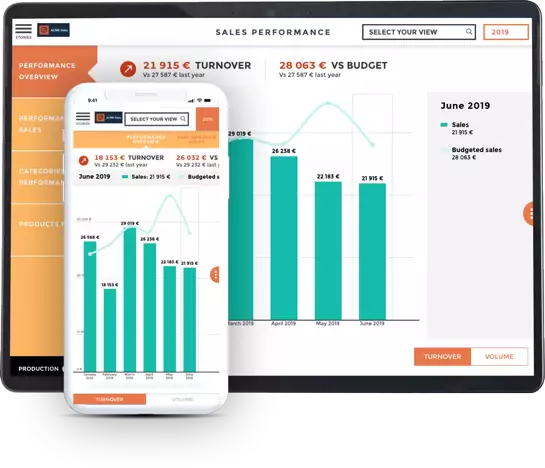Let’s be clear, a kick-ass kick-off meeting sets the tone for the project. This is why project managers need to master it perfectly. After managing dozens of IT and data-driven projects, here are my tips to make sure you and your team start every project on the right foot.

Kick-off means show-time. Roll camera… Action! 🎥
You’re about to start a new project and as you know, the kick-off is crucial.
It is the opportunity to create enthusiasm, understand the vision, needs, collect information, and shine bright like a diamond. Yeah, don’t be shy about it! Charisma is always a key to transmit deliver impactful messages.
So, now it’s at that time that you’ll meet all the stakeholders of your project. From the sponsor to the project manager, to the business, to the data and IT interlocutors.
It’s also the moment you’ll introduce yourself. And let’s be honest, you know exactly how much the first impression matters…
So breathe, take your time to make clear to everyone:
- who you are (expertise)
- what you’ve done so far (experiences)
- what you’ll do (role in the project)
- where you’ll go together (collaboration expectations)
Once it is crystal clear to everyone why you’re here, you’ve already taken a big step!
Now tell them the goal of the meeting and share with them the agenda. This way, they will know what information you are looking to collect during the meeting, and what you need to focus on.
Watch out: it’s vital that you leave the meeting with all the business insights required to understand what your client does and why they need you.
For your own sake, try to not be like Dory in the film Nemo.
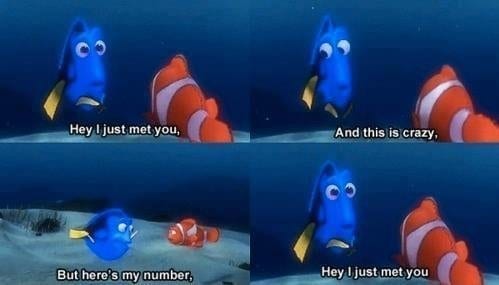
How we’re gonna work folks? 📝
After presentations, time to explain the project method you will be using.
It can be a waterfall, v cycle, or like in my case, a unique, AGILE-inspired method that has proved its effectiveness many times over.
You’re probably familiar with the Design Thinking approach? Code First? Awesome! Well, our proven method is a Design First approach based on iterations and collaboration.
Let me explain.
In short, we:
- first focus on the design using autogenerated data
- then build the data model and integrate the client data
- test, finally deliver the application and go live
Understanding the need 🧠
Once you’ve explained the method and your expectations for each phase of the project, you can further analyze your client’s needs.
This phase is critical, so please don’t be afraid to ask as many questions as you need, there is no such thing as a stupid question! If you have any doubt, feel free also to reformulate what your client says to make sure you are on the same page, right?
Great, let’s move forward!
Then, you just have to follow the steps…
Understand the context
Ask about the genesis of the project and the ecosystem around it. This will give you the opportunity to identify stakeholders, sponsors, and retractors.
It will also help you define the strategic objectives of the project, such as:
- Provide automatically updated data to the general public
- Enable employees to make decisions on accurate and reliable data
- Show that our department is fully part of the digital transformation program
For a more in-depth knowledge of the strategic objectives, you should ask them about the key success factors of the company!
Write down the Key Success Factors
First, what do we label a key success factor? Good question.
These are basically 2 or 3 objectives that will guarantee the project is a success for your client. It can vary a lot from a project to another, for example:
- Provide my end-user a friction-free mobile experience
- Make sure my users get a notification when new data are available on their app
- Show to the COMEX our capability to lead a multi-department project
Those key success factors (KSF) will help you to keep the project on the right path in case of an issue and help you to bear in mind your destination.
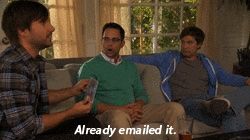
I know it may seem like a constraint at first glance, but you have to write the key success factors down, it’s essential for the customer and for you!
No diggity, no doubt.
Let’s take a concrete example. If you’re a project manager, this situation has probably happened to you a thousand times:
During the kick-off, your client said: “I want an application that is simple and understandable by everybody in my company without voice over. I also want everyone to be able to access it from anywhere, so I wish an optimized mobile experience”
-Then, as the project goes on and my clients discover new features and possibilities, It’s Disneyland, and they sometimes forget their initial goal.
His or her desires may change, and it is ABSOLUTELY NORMAL.
Don’t take it personally, we are all humans and *everybody’s changing*
Following up, a couple of weeks after starting, the same client might say to you something a little different:
“Have you seen my last mail? Could we add this? And this? And that? No actually could you remove this? The one before was better. Could you change the color? Nice, I’m pretty sure Alexandra will like it this way. But could we use that feature? Thomas is expecting it. Could we also have more details here? It’s a must-have for Maxence’s analysis you know…”
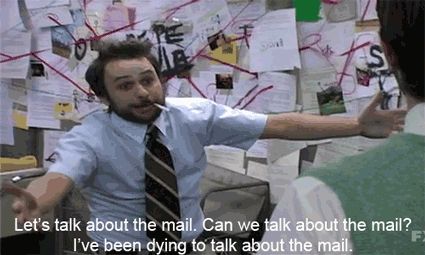
And here we are, with a growing list of ever-changing demands! It is now my role to remind them of their initial need. Consequently, you can do easily use their own words, the ones you’ve written down together defining the Key Success Factor of the project:
“A simple application, understandable by anybody without voice over”
Got it? Yep! They usually understand we’re taking a wrong path and why I have to say NO to add more and more features, for their own good.
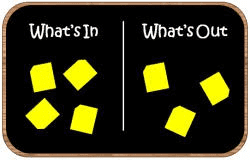
Define the scope
Saying “no” doesn’t mean “Never”. You should always start with an ambitious yet reasonable scope, and add more later on.
What matters is to stay within the project scope.
So please, explain to your clients why the scope cannot change in the middle of the project. You’re conducting projects through several applications/versions to deliver on time a qualitative work
One tip to keep the scope doable, play with the resources you have in hands: if your clients want to cover a larger business scope, ask them for more time. And if they’re keep asking for a quicker delivery, reduce the business scope of the project.
Pretty logical when you think about it, huh?
Identify who are the end-users
This is where you get into the heart of the matter!
- Who are the users?
- What is their action perimeter?
- Will they have the same access rights or do they need restricted visibility?
Clearly defining the end-users of the solution you are developing will help you in many ways: by accelerating adoption, maximizing usage, creating behavioral changes and taking action based on the application. And thus, it will generate a high return of investment (ROI) for your client.

Understand why they need your application
Once you know who you are building the app for, you need to understand:
- What will they use it for? To explore data or to pilot activity? To present figures at COMEX meetings? To pilot their factory’s performance? To drive their daily activities?
- What specific actions will they accomplish through the app?
Make sure you put yourself in your users’ shoes.
When they need to use it
You now have to find out the use frequency of your application:
- Every day? Every week? Every month?
- On a specific event or project instance such as COMEX meetings?
And where
Depending on your users’ habits, devices used for your application will be different:
- On which device would they use most of the app? Laptop? Mobile? Surface?
If they plan on using the app mostly on smartphones, you have to take it into account while designing your app.
Then, find out what they need
This is specific to the type of project you’re conducting.
In my case, KPI (key performance indicators) my clients want to follow and how they want to be
able to analyze them: comparing them to budget, previous year, year to date or current.
My questions are then about data. I have to understand how the data will be provided and when:
- Will we use connectors to connect to my client databases?
- Will the client drag & drop files into Toucan?
- Or through a File Transfer Protocol (FTP)?
- When will the data refresh occur?
Now that you’re ready, fix the deadlines [MAKE A CHOICE 🙂]
Piece of cake, isn’t it? If you get answers for the 5W’s (Who, What, When, Where, Why, How), you’re pretty sure your project is going to be a success!
The last thing to do is to agree on the timeline and project your client on the roadmap you’re setting up together. Make sure, planing the steps of the project, that you have in mind any strong deadline your client might have about this project (presentation of the application in front of the top management, etc).
Write the minutes of the kick-off (and take time doing it cause it is crucial) and help yourself to a good beer!
Be proud of yourself: you’ve got all the business insights you wanted and your project has started.
In time, conducting a successful kick-off meeting will come naturally to you and you won’t even have to think twice before using the right techniques to get the most out of them. But believe me, they will never get boring: each project is unique and clients always have surprises in store for you!

To sum-up:
Follow these steps to make sure your project starts on right track with a kick-ass kick-off meeting:
- Introduce yourself properly
- Introduce the project method chosen
- Collect the information (context, KSF, scope, 5Ws)
- Agree on the timeline
If you are craving to know more, request a demo!




